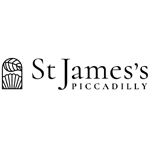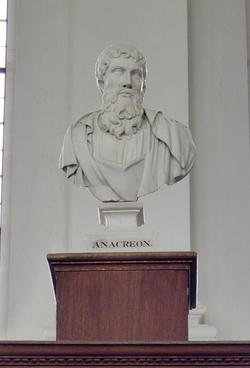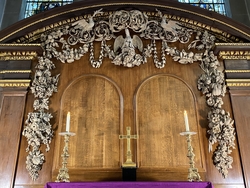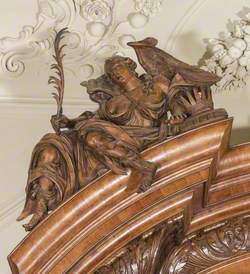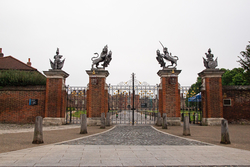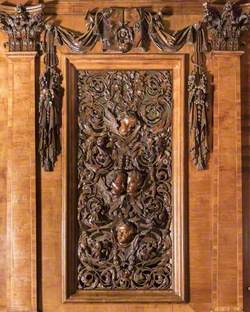How you can use this image
This image can be used for non-commercial research or private study purposes, and other UK exceptions to copyright permitted to users based in the United Kingdom under the Copyright, Designs and Patents Act 1988, as amended and revised. Any other type of use will need to be cleared with the rights holder(s).
Review the copyright credit lines that are located underneath the image, as these indicate who manages the copyright (©) within the artwork, and the photographic rights within the image.
The collection that owns the artwork may have more information on their own website about permitted uses and image licensing options.
Review our guidance pages which explain how you can reuse images, how to credit an image and how to find images in the public domain or with a Creative Commons licence available.
Notes
Add or edit a note on this artwork that only you can see. You can find notes again by going to the ‘Notes’ section of your account.
The reredos which sits behind the altar rail in St James’s Church is the work of seventeenth century sculptor, Grinling Gibbons, one of Britain’s most famous and renowned woodcarvers. It was given to St James’s by Sir Robert Geyre, a courtier and parishioner who lived nearby on Jermyn Street and who was a collector of Gibbons’ work. The church also has very fine plate given by Geyre. The reredos is a superlative example of the naturalistic style Gibbons pioneered, featuring the typical trademarks of his Baroque sculptures: cascades of flowers, fruit, leaves, shells and birds that captivate the viewer with their intricacy. The delicately sculpted shapes of plums, grapes, roses, tulips and seashells celebrate Creation. In particular, scallop shells represent Saint James the pilgrim, doves with olive branches represent the Holy Spirit and peace, and at the top, a pelican feeds her young with her own blood, a renowned medieval symbol of Christ’s crucifixion and the Eucharist.
Title
Reredos
Date
1684
Medium
lime wood
Accession number
5
Acquisition method
gift from Sir Robert Geyre
Work type
Sculpture

